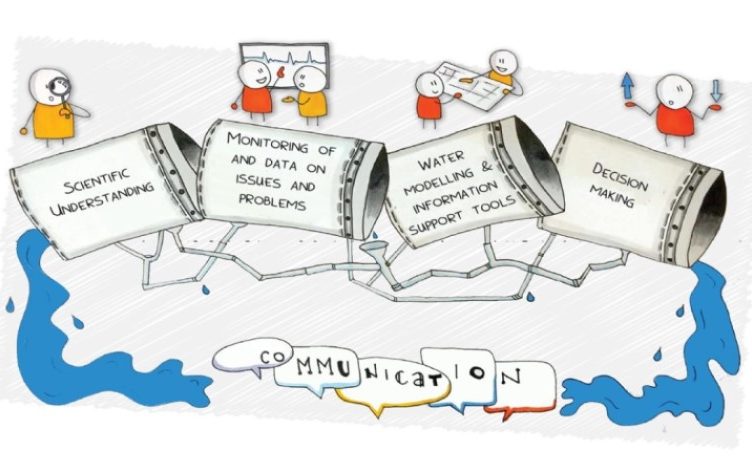
05/12/2024
Event Summary: Overview of water quality modelling projects from the Queensland Water Modelling Network with Callym Dunleavy
Read more
Have you ever stopped to think about gender when you are building, upgrading and/or using water models? Probably not, unless you work on water issues in developing countries where equitable access to water and its management is constrained by social norms and cultural practices. Becoming aware of our unconscious biases can lead us from being ‘gender-blind’ to being ‘gender-aware’; it can make us more thoughtful in our language and reconsider the assumptions we make when creating, applying and interpreting model results. Come on the journey with us …

Image source: Packett et al. (2020)
Why gender is important in modelling
Hydrological models are one of the major tools that water resource professionals develop to aid decision-making. When they are built, choices of what considerations are and are not within their scope are made. Decisions on what the model can test, what metrics and algorithms are calculated for reporting purposes, and what is included in any sensitivity or uncertainty analysis – all affect the meaning of the final output. These decisions are usually made without gender analysis and are, therefore, gender-blind. If decision-makers are using information from models that are gender-blind, then their decisions are likely to be gender-blind as well.
Can you build gender into the hydrological modelling processes themselves? A default position would be that considering gender would not change the representation of the purely biophysical processes in models. And the call to consider gender is sometimes interpreted as a request for modelling platforms that can include explicit representation of men and women’s behaviours and decisions in the modelling. Agent-based models, system dynamics models and Bayesian networks do accommodate these details. However, we are interested in biophysical modelling – at the core of most models used by water agencies are quantitative biophysical simulation models. Within a water resource context most of these models are developed as planning models, i.e. they provide ‘what-if’ analysis to support planning and policy decisions.
So, what are some of the entry points to consider gender in your modelling? Packett et al (2020) provide a useful starting point by looking at 3 key, good practice modelling steps: problem definition, option modelling, decision making.

Adapted from: Packett et al. (2020)
Interrogating our modelling practices should prompt us to reflect on the values of gender equity in our projects and render water policies, strategies and plans efficient and substantial. As practitioners in a sector that has the power to contribute to a reshaping of societal norms around access to, and management of water, we need to be not only ‘gender-aware’, but ‘gender-literate’.
Some readings to get you started:
Alston M (2007) Drought Policy in Australia: gender mainstreaming or gender blindness? Gender, Place & Culture. 16 (2) (2009), pp. 139-154, 10.1080/09663690902795738
Escobar M, Forni L, Ghosh E, Davis M (2017) Guidance Materials for Mainstreaming Gender Perspectives into Model-based Policy Analysis. U.S. Center: Stockholm Environment Institute Gender and Equity Programme. https://www.sei.org/mediamanager/documents/Publications/SEI-2017-Gender-guidance-for-modelling-studies.pdf. [Accessed 9 Sep 2020]
Kadel LM, J Lacey, F Ahmad, K Hayes, C Gurung Goodrich, D Cruz Lopez, G Milne, T Darbas, K Olsen (2017) Making gender count. Leveraging M&E to mainstream gender. CSIRO, Australia. 56 pages. https://doi.org/10.4225/08/594eb6d336069
Packett E, NJ Grigg, J Wu, SM Cuddy, PJ Wallbrink, AJ Jakeman (2020) Mainstreaming gender into water management modelling processes. Environmental Modelling & Software 27 : 104683 https://doi.org/10.1016/j.envsoft.2020.104683
Walmsley T (2019) (Re)thinking gender: confronting challenges to gender mainstreaming in development practice. CSIRO, Australia. 20 pages